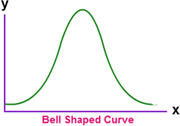Normal Bell Curve for better marks

How many times have you walked away from a test or exam paper thinking or saying aloud?
- I wish I had more time!
- Oh, now I know the correct answer! Why didn’t I think of it just now?
- I shouldn’t have spent so much time on that question!
- How could I have missed the last page of the paper?
If the above sounds familiar to you, then you are not alone.
Spotting Questions: Spotting questions is by far one of the most common mistakes many students make when preparing for a test or exam paper. It is also the worst mistake you can commit before sitting for a paper.
Panicking Before or During a Paper: Do you worry that you would not have enough time to complete a paper, even before it starts? Are you very afraid that you would not be able to answer most of the questions in the paper, even before it starts? If you experience any of the above, or other symptoms of anxiety and panic, you need to check yourself.
Arriving Late for a Paper: Most of us are punctual, especially for important occasions. However, some of us may have a habit of being late. Even if you are a punctual person, there may be times when things just suddenly crop up and you end up late for an appointment.
Failing to scan through the Questions Once: Do you immediately turn to the first page and answer the first question straight away? If yes, stop! You are making another common mistake most students make!
Starting With The Most Difficult Question: Some students attempt their test and exam papers in a less efficient way. They start with the most difficult questions.
To score well in an exam it is suggested to follow
Normal Bell Curve.

For one thing, attempting a tough question is a bad start to a paper. Your mind gets stumbled at the very beginning of the paper. You rack your brains trying to come out with the answers for that agonizing question. You begin to feel exasperated. You mind loses its calm. You cannot think properly. And you lose precious time while you are stuck with the tough question.

To attempt a paper in a scoring way, one may use the Bell Curve. The X axis of the curve represents the time, while the Y axis represents the concentration and efficiency of the mind. If we look at the curve it is pretty clear that the concentration and efficiency starts getting better as we start answering the questions. It reaches its peak in the mid of the curve while gets lower at end. The Bell curve as shown is divided in three parts, which is further explained by an equation. Total duration for exams is of 3hrs which counts to 180 minutes. If these minutes are used strategically then scoring can be made better by attempting questions in a better way.
The first 40 minutes are crucial and are of utmost importance, because the concentration at the start of the examination is high but the efficiency is low which increases gradually as we move forward on X axis. Thus it is suggested to answer those questions first which you find easy to answer. As soon as you start answering the mind get its food and increases the concentration level and efficiency. If you manage the easy questions properly, you will be able to answer them quickly and allow yourself more time for the difficult questions. Another reason to start with a low concentration question is the formalities which have to be fulfilled during the examination. One has to fulfill the compliance required, such as attendance, signature of invigilator etc. All these formalities are being done in the first hour with the commencement of the examination. Thus it might break your concentration twice or thrice as the case may be.
Once done with this compliance you should proceed with tough questions in the middle of the curve, because the concentration and efficiency are at peak (110 minutes).The last 30 minutes should be utilized on the low total questions which require low concentration and contribute as a cherry on the cake. Remember, save 10 minutes to check the answers, sequence, extra answer sheet details on main copy etc.





